10 Of The Most Disturbing And Weird Science Experiments Ever Conducted
Real life science stories are sometimes scarier and weirder than Frankenstein. No matter how absurd and meaningless they sound, scientists did actually try to create animals that glow in the dark, and they even tried to stick two dog heads together. Here are 10 of those bizarre cases in the history of science.
10. The Cat Telephone
Two scientists, Ernest Glen Wever and Charles W. Bray, conducted an experiment to turn a cat into a telephone in 1929. They first extracted a piece of the cat's skull, then placed an electrode on the animal's hearing nerves. These electrodes were connected to an amplifier with cables 59 feet (18 meters) long. Thus, a sound coming to the ear of the cat would be heard in the room where the amplifier was located.
The result was successful. “Speech was transmitted with great fidelity. Simple commands, counting, and the like were easily received. Indeed, under good conditions the system was employed as a means of communication between operating and sound-proof [sic].” they wrote. They then killed the cat and tried it again, and that’s how science learned dead cats can’t be telephones but live ones can.
9. World War I Facial Reconstructions
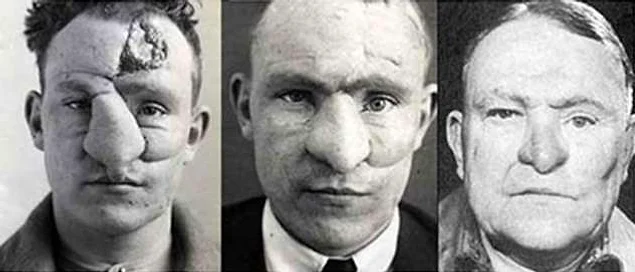
During and after World War I, about 3,000 soldiers underwent surgery at The Queen's Hospital for the wartime wounds. Their scars were visually shocking, but the operations were remarkable for their time.
One of the well-documented cases is the work of Dr. Harold Gillies. Lieutenant William Spreckley’s nose and cheeks were almost destroyed after a gunshot to the face. Dr. Gillies took rib cartilage from the patient and implanted it into Lieutenant Spreckley's forehead. It stayed there for six months, and in a subsequent operation it was then transferred and used to construct a new nose. After three years of work, Spreckley was discharged in October 1920, looking absolutely remarkable.
Needless to say, Dr. Gillies is often hailed as the godfather of modern plastic surgery.
8. Glow-In-The-Dark Pigs
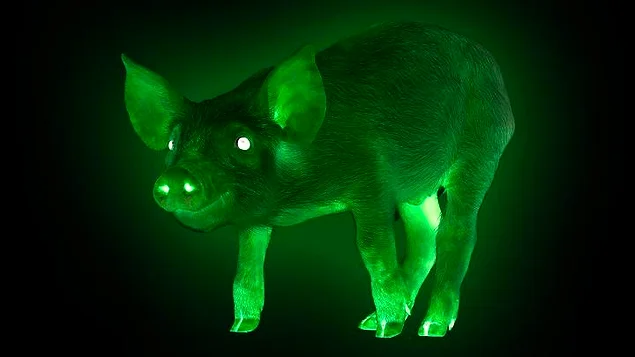
From chickens and tobacco plants to rats, many animals had been genetically mutated to glow in the dark, but the weirdest one was the pigs .In 2006, National Taiwan University's Department of Animal Science and Technology added genetic information from jellyfish into pig embryos.The result was three pigs that glowed in the dark with a fluorescent green light. But not just their skins: the scientists said their organs glowed!
7. The Mouse With A Human Ear
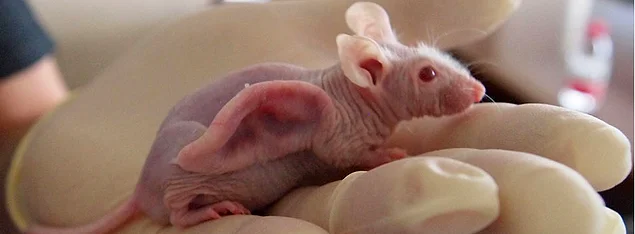
The Vacanti Mouse was a lab mouse that was part of a study in 1997, in which the rodent had what looked like a human ear grown on its back.
The ear on the mouse was actually made of a biodegradable polymer frame, based on that of a 3-year-old child. Once under the skin of the mouse, cartilage was able to grow into the shape of an ear using chondrocytes – cartilage cells from a cow.
It was a meant as a demonstration of how to grow tissue-engineered cartilage. However, it became a meme in an era before memes, by circulating through chain emails and water-cooler conversations with people held in disbelief. A similarly strange experiment has since been conducted in a 2013 study.
6. Freud and Emma Eckstein

One of Freud’s most famous patients, Eckstein suffered from “hysteria” and “compulsive masturbation.” Believing surgery would fix her problems, Freud called for Wilhelm Fliess (a doctor who had strange ideas about the human body. He thought the nose was hooked up to the genitals and caused all sorts of sexual, physical, and mental problems). At first, the operation seemed like a success, but a few weeks later, blood started gushing out of Eckstein’s nose. As her face caved in, she snorted out “two bowls full of pus” and a hunk of bone the size of a coin. With his patient on death’s doorstep, Freud scheduled a second operation with a different doctor, who made a disgusting discovery. As it turned out, Fliess had accidentally left half a meter of gauze inside Emma Eckstein’s nose.
Unsurprisingly, after the incident, “nasal reflex neurosis” fell out of favor with the medical crowd.
5. The Soviet Surgeon And His Two-Headed Dog
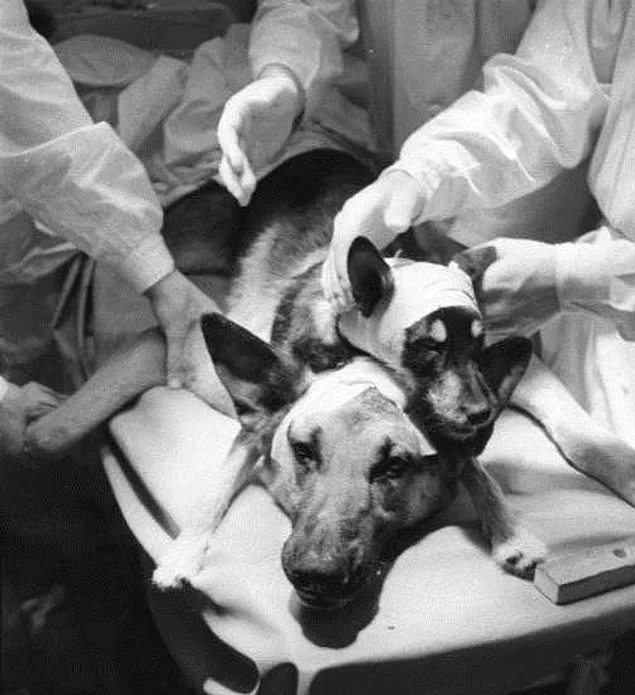
Born in 1918, just after the Russian Revolution, Vladimir Demikhov was a Soviet scientist who experimented with transplants on animals from the 1930s until the 1960s. Although he is now regarded as somewhat of a pioneer, his grisly experiments on dogs have left a stain on his reputation. Most notable were his attempts to graft two dogs together.
His operation sewed the forearms and head of small 9-year-old dog named Shavka to a larger stray dog called Brodyaga, which translates to “Tramp.” The operation involved severing the jugular vein, the aorta, and spinal column of Shavka, then linking her circulatory system to Brodyaga's body.
The two heads could eat and drink separately, although both canines died four days later. Nonetheless, Demikhov attempted this experiment dozens and dozens of times on different subjects.
Reporting on this story in 1959 with a fair dose of skepticism and fear, Life Magazine said: “The Russians who created the two-head dog are now considering a human transplant: putting a new leg on a woman who lost her own.” It isn't believed this operation went ahead. However, in his time, Demikhov did also carry out transplants.
4. Holmesburg program
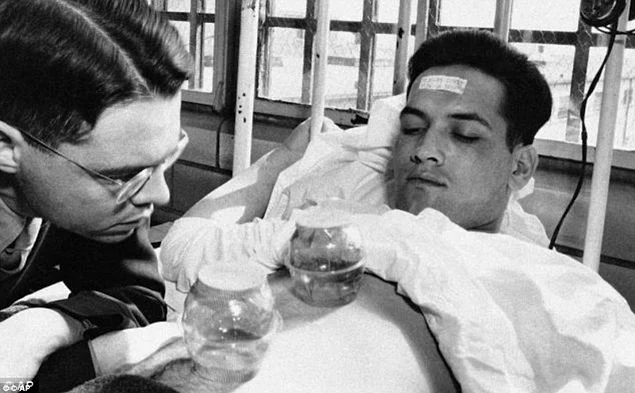
For 20 years, a dermatologist, Dr. Albert M. Kligman of the University of Pennsylvania used the inmates of a Philadelphia prison as the subjects of tests on shampoo, foot powder, deodorant, and later, mind-altering drugs, radioactive isotopes, and dioxin.
3. Project QKHILLTOP

In 1954, the CIA's Project QKHILLTOP was created to study Chinese brainwashing techniques, and to develop effective methods of interrogation. Most of the early studies are believed to have been performed by the Cornell University Medical School's human ecology study programs, under the direction of Dr. Harold Wolff. Wolff requested that the CIA provide him any information they could find regarding "threats, coercion, imprisonment, deprivation, humiliation, torture, 'brainwashing,' 'black psychiatry,' and hypnosis, or any combination of these, with or without chemical agents." According to Wolff, the research team would then:
“...assemble, collate, analyze and assimilate this information and will then undertake experimental investigations designed to develop new techniques of offensive/defensive intelligence use ... Potentially useful secret drugs (and various brain damaging procedures) will be similarly tested in order to ascertain the fundamental effect upon human brain function and upon the subject's mood ... Where any of the studies involve potential harm of the subject, we expect the Agency to make available suitable subjects and a proper place for the performance of the necessary experiments.”
2. Lauretta Bender's Testing on Children

Dr. Lauretta Bender who worked at the Creedmoor Hospital in New York applied electroshock treatment to children with social issues. Bender's method also included children being interviewed and analyzed in front of crowded groups. Although Bender's work was stopped when schizophrenic symptoms began to appear in children who had undergone electroshock treatment, over 100 children had already been subjected to this torture.
1. Project MKUltra

Project MKUltra – sometimes referred to as the CIA's mind control program – is the code name given to a program of experiments on human subjects, at times illegal, designed and undertaken by the United States Central Intelligence Agency. Experiments on humans were intended to identify and develop drugs and procedures to be used in interrogations and torture, in order to weaken the individual to force confessions through mind control.
MKUltra used numerous methodologies to manipulate people's mental states and alter brain functions, including the surreptitious administration of drugs (especially LSD) and other chemicals, hypnosis, sensory deprivation, isolation, verbal and sexual abuse, as well as other forms of psychological torture.
The scope of Project MKUltra was broad, with research undertaken at 80 institutions, including 44 colleges and universities, as well as hospitals, prisons, and pharmaceutical companies. The CIA operated through these institutions using front organizations, although sometimes top officials at these institutions were aware of the CIA's involvement.
Comments
Post a Comment